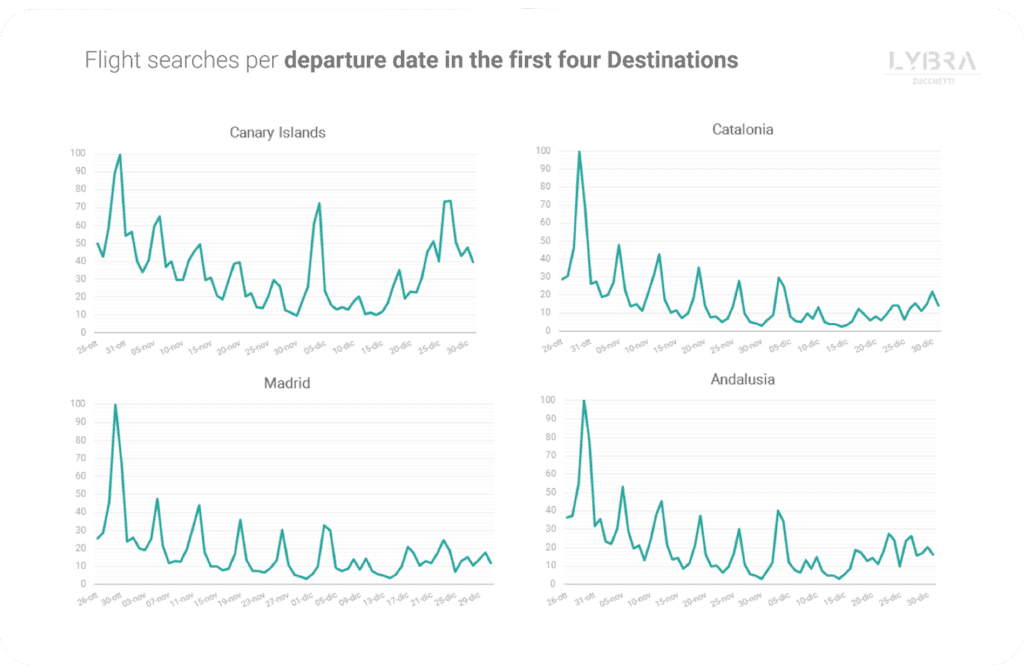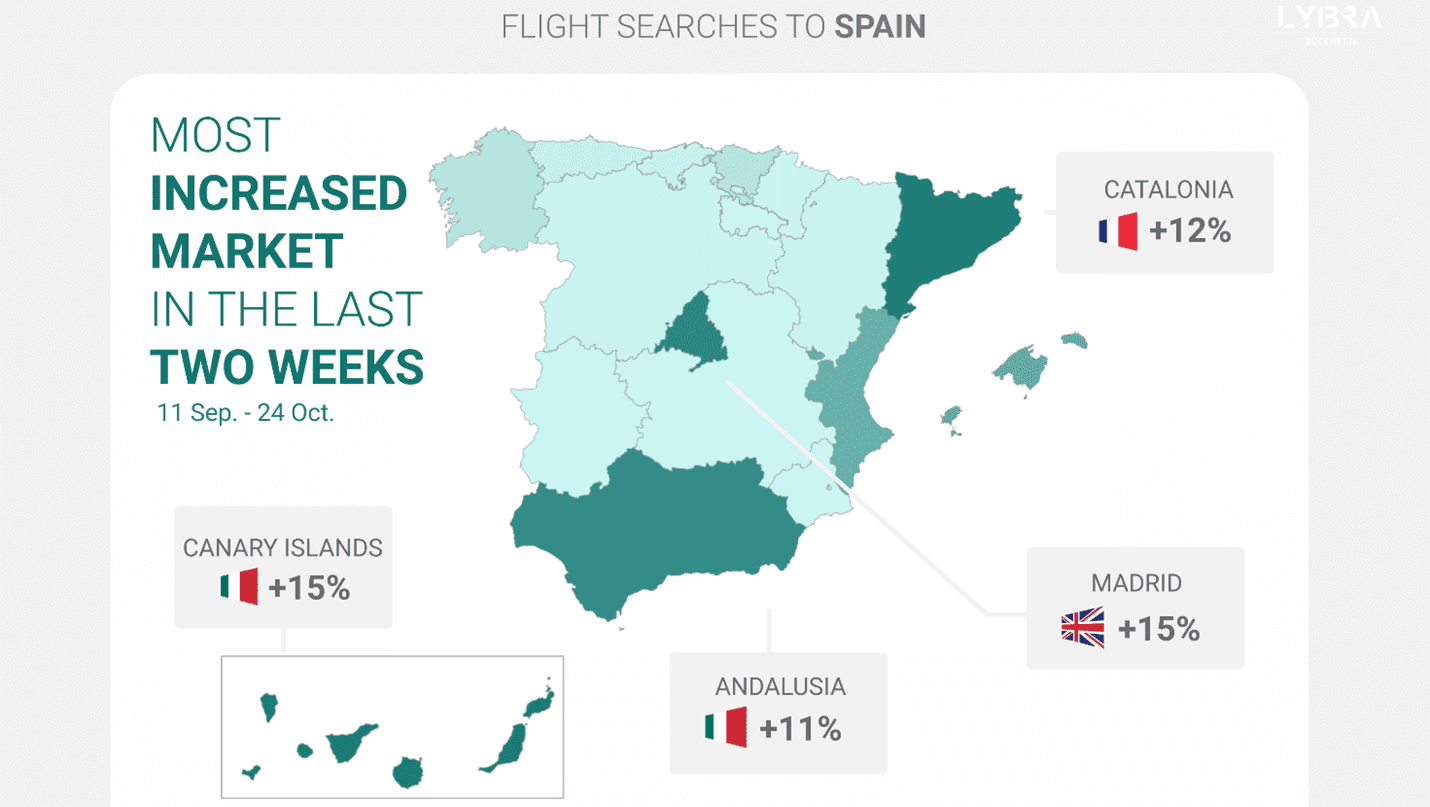Tourists looking for flights to Spain are mainly domestic (22%), but foreign markets are growing.
NB: This is an article from Lybra, one of our Expert Partners
In the main Spanish tourist destinations, there has been a significant increase in searches by Italians, but also by French and English. On the other hand, the domestic market remains quite static, while the German market is slightly decreasing.
Subscribe to our weekly newsletter and stay up to date
THE MOST ACTIVE FOREIGN MARKETS
The destination most desired by tourists is the Canary Islands, in first place with 5.1 million flight searches. The most interested tourists are British (31%) but the demand from the UK market has slowed down recently; in fact, searches during the last two weeks have dropped by 2.7%. Similarly, the Spanish market, which is in second place (27%), is not growing (-0.6%), nor the German market (+0.4%). On the other hand, searches by Italians have strongly increased (+15%); it is the fourth foreign market for the Canary Islands, with a 14% share. Searches by the French are also increasing (+18%), but they only represent 3% of searchers.
Catalonia is the second most searched destination for tourists with 4.9 million searches: in this case, the Spanish market is the most important (25%) and is increasing slightly (+2.6%). On the positive side, searches for flights by French (+12%) and Italian tourists (+9%) are growing, while German tourists are decreasing by 5%.
In third place is the Autonomous Community of Madrid (4.5 million searches), which, in the last 30 days, has become very popular with British tourists. The growth rate is 15% and a peak in searches was recorded on October 12, the Spanish National Day. The British account for 16% of the market, with the Spanish (33%) and Italians (21%) at the top. Domestic tourism is static (+0.6%), while the Italians are increasing by 7%.
Finally, Andalusia is the fourth most desired destination for tourists, with 4.3 million searches. The most important market for this destination is the domestic one, which accounts for 29%; however, during the last two weeks it has recorded a decrease of 6.1%. The most active market is the Italian one, in third place with 13% of searches; it has grown by 11%.

THE MOST SEARCHED PERIODS
As illustrated in the graph above, tourists are mainly interested in the November 1st holiday; the peak of searches is for October 30th – a common trend for all four destinations. In the days following the bridge, travel intentions are cut in half and there are only the traditional increases at the weekend; however, the trend changes with the approach of Constitution Day, the Spanish national holiday celebrated on December 6th. Searches for Sunday, December 5th illustrates a strong travel intention, especially for the Canary Islands and Andalusia. In both cases, the tourists most intent on travelling are Spaniards. The demand for Christmas holidays is still weak; there is pressure for these dates, only in the Canary Islands, especially from the Spanish and British travelers.
About Destination
Destination is a market intelligence project created by Lybra – developers of the most complete, machine learning, data-centric Revenue Management System (RMS) available on the market – to share real-time, region-specific statistics, information and trends in the world of tourism.
Every day, Lybra analyzes millions of datasets – data collected from thousands of hotels’ PMS and flight search data from a leading metasearch booking engine – to help hoteliers “look ahead to better understand the present;” in other words, Lybra helps hoteliers understand the upcoming demand for their destination and gives them the revenue management tools and actionable insights necessary, to maximize bookings and revenue.
The aim of Destination is to give hoteliers and DMOs a more expansive view of tourism news and trends in different regions around the world. Destination produces weekly Travel Demand Reports, which share tourism developments for a specific country/region and analyze how the region’s travel news has impacted tourist demand.





